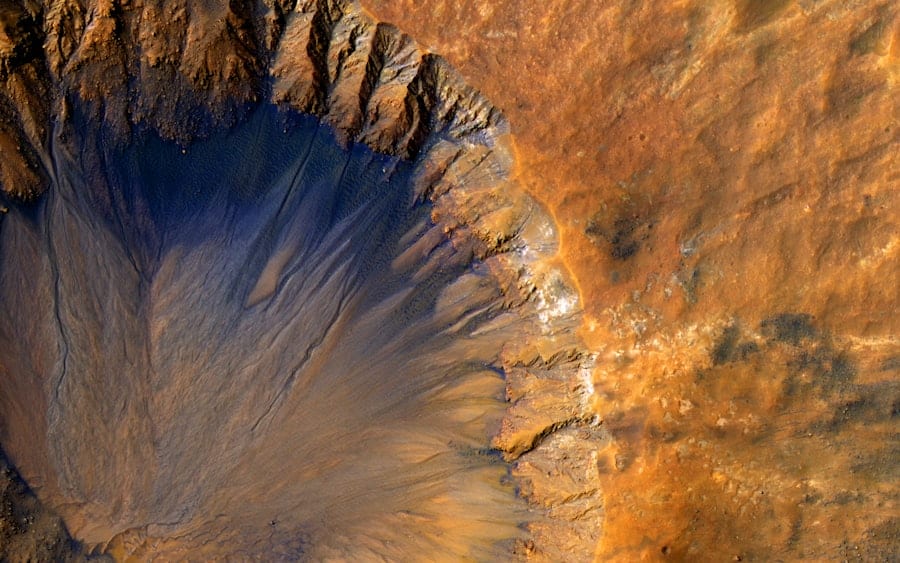The concept of space habitats has evolved significantly since the early days of human space exploration. As missions to the Moon and beyond have transitioned from short-term visits to the prospect of long-term habitation, the need for sustainable living environments in space has become increasingly critical. Space habitats are designed to support human life in the harsh conditions of outer space, providing essential resources such as air, water, food, and shelter.
These habitats must not only protect inhabitants from cosmic radiation and microgravity but also create a livable environment that promotes physical and mental well-being. The vision of establishing permanent or semi-permanent habitats on celestial bodies, particularly Mars, has captured the imagination of scientists, engineers, and the public alike. With organizations like NASA, SpaceX, and various international space agencies actively pursuing plans for long-duration missions, the development of effective space habitats is paramount.
These habitats will serve as bases for scientific research, exploration, and potentially even colonization, marking a new chapter in humanity’s quest to become an interplanetary species.
Key Takeaways
- Space habitats are essential for long-term missions, such as human colonization on Mars, and require sustainable and self-sufficient designs.
- Living in space for extended periods presents challenges such as radiation exposure, isolation, and limited resources.
- Advancements in space habitat technology, including 3D printing and recycling systems, are crucial for creating sustainable habitats.
- Psychological and physiological considerations, such as mental health and bone density loss, must be addressed in space habitat design.
- Collaboration and international partnerships are key for the development of space habitats and the possibility of human colonization on Mars.
Challenges of Living in Space for Extended Periods
The Physical Consequences of Microgravity
One of the most pressing issues is the microgravity environment, which affects human physiology in various ways. Prolonged exposure to microgravity can lead to muscle atrophy and bone density loss, as the body adapts to a lack of gravitational force. Astronauts on the International Space Station (ISS) engage in rigorous exercise regimens to mitigate these effects, but the long-term implications of living in such conditions remain a concern for future missions.
The Psychological Toll of Isolation
Another significant challenge is the psychological impact of isolation and confinement. Astronauts on long-duration missions may experience feelings of loneliness, anxiety, and depression due to the limited social interactions and the stark environment of space.
The design of space habitats must incorporate elements that promote social interaction, recreation, and mental well-being to support crew members during extended stays.
Advancements in Space Habitat Technology
Recent advancements in technology have paved the way for more sophisticated space habitats capable of supporting human life for extended periods. Innovations in life support systems are at the forefront of this development. Closed-loop systems that recycle air and water are being refined to minimize resource consumption and waste generation.
For instance, NASA’s Advanced Life Support program focuses on creating systems that can efficiently reclaim water from urine and sweat while also producing oxygen through biological processes. In addition to life support systems, advancements in materials science are contributing to the construction of more resilient habitats. Lightweight yet durable materials are being developed to withstand the harsh conditions of space, including extreme temperatures and radiation exposure.
For example, research into inflatable habitats has shown promise; these structures can be launched compactly and expanded once in orbit or on another celestial body. Such designs not only reduce launch costs but also offer flexibility in habitat configuration.
Designing Sustainable and Self-Sufficient Space Habitats
The design of sustainable and self-sufficient space habitats is essential for long-term missions. A key aspect of this design is the integration of agricultural systems that can provide food for astronauts. Hydroponics and aeroponics are two methods being explored for growing crops in space without soil.
These systems use nutrient-rich water solutions or mist to nourish plants, allowing for efficient use of resources while minimizing waste. Experiments aboard the ISS have demonstrated the feasibility of growing various crops, including lettuce and radishes, which could serve as a vital food source during extended missions. Energy sustainability is another critical factor in habitat design.
Solar power is currently the most viable energy source for space habitats due to its abundance in space. Solar panels can be deployed on habitats to harness energy from the Sun, which can then be stored in batteries for use during periods of low sunlight or when energy demand peaks. Additionally, research into nuclear power systems is ongoing, with concepts like small modular reactors being considered for future missions.
These energy solutions must be reliable and efficient to ensure that habitats can operate independently for extended periods without resupply from Earth.
Psychological and Physiological Considerations for Space Habitats
The psychological well-being of astronauts is as crucial as their physical health when it comes to long-term space missions. The isolation inherent in space travel can lead to a range of mental health issues, including stress, anxiety, and interpersonal conflicts among crew members. To address these concerns, space habitat designs must incorporate features that promote social interaction and personal privacy.
Common areas for relaxation and recreation, as well as private quarters for individual crew members, can help mitigate feelings of isolation. Physiological considerations also play a significant role in habitat design. The effects of microgravity on human health necessitate careful planning for exercise regimens and medical facilities within the habitat.
Dedicated spaces for physical activity equipped with resistance machines and cardiovascular equipment are essential to counteract muscle atrophy and bone loss. Furthermore, medical facilities must be equipped to handle potential health issues that may arise during long missions, including emergency medical care and telemedicine capabilities that allow astronauts to consult with Earth-based medical professionals.
Potential Locations for Space Habitats on Mars
Mars presents a compelling target for future human habitation due to its similarities to Earth and its potential resources. Identifying suitable locations for space habitats on Mars involves considering factors such as access to water, radiation protection, and proximity to scientific interest areas. One promising site is the Martian polar regions, where ice deposits could provide essential water resources.
These regions also offer natural protection from radiation due to their geological formations. Another potential location is the Martian lava tubes—subsurface tunnels formed by ancient volcanic activity.
Establishing habitats within these structures could significantly reduce the need for extensive shielding materials while offering a unique opportunity for scientific exploration of Mars’ geological history.
Collaboration and International Partnerships for Space Habitat Development
The development of space habitats is not solely a national endeavor; it requires collaboration across borders and disciplines. International partnerships have already proven successful in projects like the ISS, where multiple countries contribute resources, technology, and expertise. Such collaborations can enhance innovation by pooling knowledge from diverse fields while also sharing the financial burden associated with developing advanced technologies.
Organizations like the European Space Agency (ESA), Roscosmos (Russia), and private companies such as SpaceX are increasingly working together on projects aimed at establishing human presence on Mars. These partnerships can facilitate shared research initiatives focused on habitat design, life support systems, and agricultural practices in space. By fostering collaboration among nations and private entities, humanity can accelerate its progress toward sustainable living environments beyond Earth.
The Future of Space Habitats and the Possibility of Human Colonization on Mars
As technology continues to advance and our understanding of living in space deepens, the prospect of human colonization on Mars becomes increasingly plausible. The development of robust space habitats will be a cornerstone of this endeavor, enabling humans to live and work on Mars for extended periods. The vision extends beyond mere survival; it encompasses creating thriving communities that can sustain themselves through innovative agricultural practices, energy production methods, and recycling systems.
The future may see not just temporary outposts but fully functional colonies where humans can conduct scientific research, explore their surroundings, and even establish a new society. As we look ahead, it is essential to consider ethical implications surrounding colonization efforts—ensuring that we respect any potential Martian ecosystems while fostering a spirit of exploration that benefits all of humanity. The journey toward establishing permanent habitats on Mars represents not just a technological challenge but also an opportunity for humanity to unite in pursuit of a common goal: becoming an interplanetary species capable of thriving beyond our home planet.
In addition to exploring The Future of Space Habitats for Long-Term Missions to Mars, readers may also be interested in learning about the best Apple laptops for 2023. Enicomp has compiled a list of top-performing Apple laptops that are perfect for those looking to stay connected and productive while on the go. Check out the article




